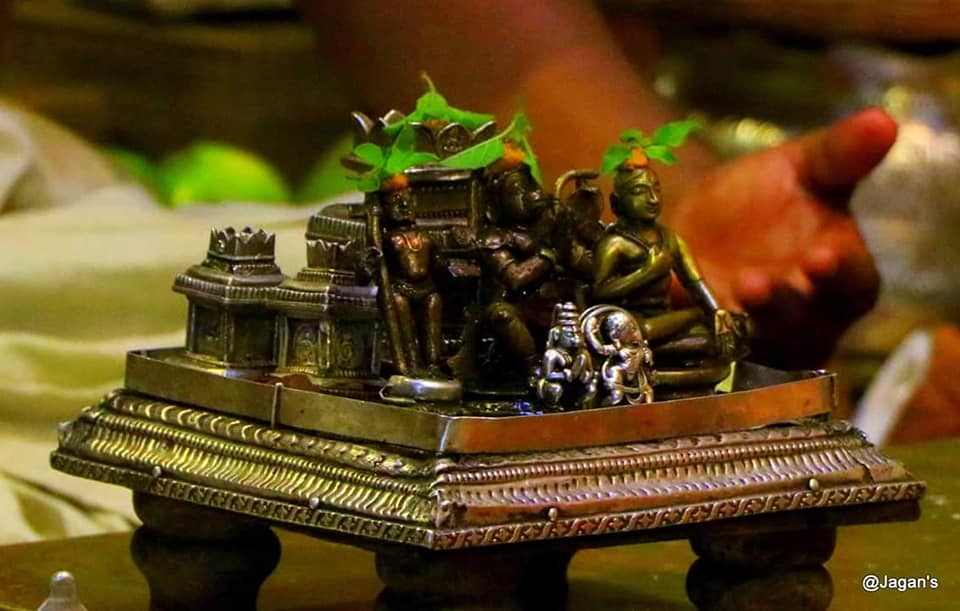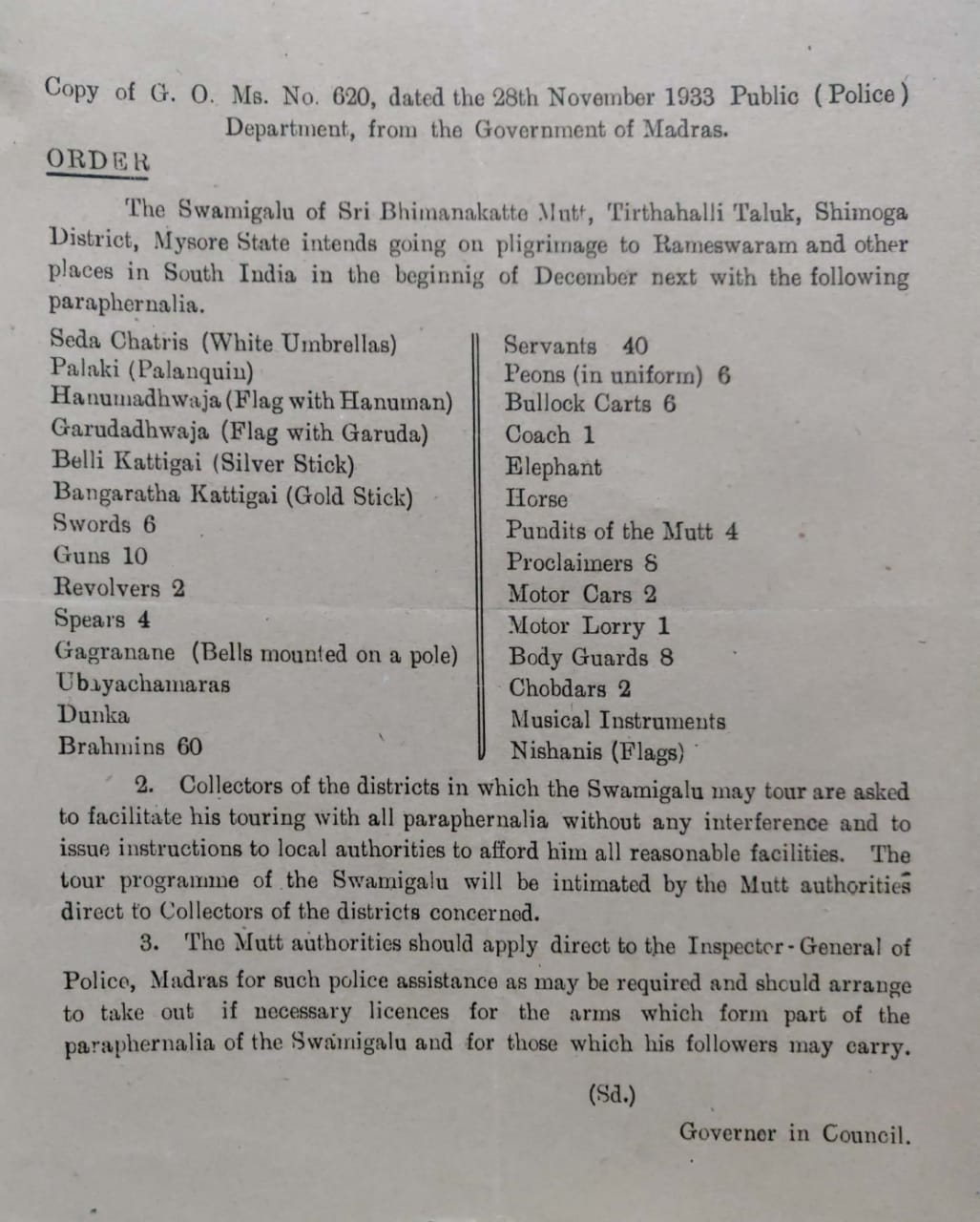
Learning in ancient times, primarily comprised the study of Vedas and other lore’s. The teaching of holy texts was commenced by Lord through different forms (Rupa). The Lord blessed God Brahma and others with wealth of shastric learning. Once, in the form of Swan (Hamsa) the Lord instructed some disciplinary norms of sagic life for mandatory practice. He set himself as a paradigm of sagic life and dawned the Parampara (the tradition). In this noble tradition, many sages of magnanimous personality succeeded. These sages inherited rich knowledge and mystic power. They embraced the discipline of sagic life. The sages were proficient and skilled to promote the grandeurs of the tradition, they sermonised the right information of different lore’s.
It is an unbreakable Parampara headed by Lord Hamsa. Then, it was elegantly embellished by God Brahma, Sanaka and other sages. Sage Doorvasa, Garudavahana Theerta, Kaivalya Theerta, Para Theerta, Satyaprajna, Prajna Theerta, Achyutaprekshacharya, and then Sri Madhwacharya. The Sanyasa Parampara started from this lineage.
God Brahma used to worship the Lord in different forms. After him, the icons were inherited by sage Sanaka and others (widely known as Brahmamanasaputras). After the Brahmamanasaputras these icons were inherited by the well known sage Dooravasa. Sage Doorvasa continued teaching the lore’s and worshipped the Lord. During his sacred tour, he and his pupils reached the bank of river Tunga near Tirthahalli. He was mesmerised by the serenity of the place and continued to stay there for a longer duration. Since then the place came to be known as Doorvasapuram. The descendent of sage Doorvasa practised teaching the skills of the Parampara to their disciples and went for Tattvaprachara. A sage of high rank and reputation Sri. Kaivalya Theerta was a sage of high knowledge and mystic power. On knowing his greatness, the king of the Pandava race, Janamejaya, gifted the great scholar Sri. Kaivalya Theerta the land of Doorvasapuram. A mention of the gifts to Sri. Kaivalya Theerta is made on the copper plate that is preserved in the archaeological museum of Shimoga.
Doorvasapuram was considered as the headquarter of the sages. One of the sages Sri. Achyutaprekshacharya, who belonged to the same Parampara went on a sacred tour for Tattvaprachara. During this time, when he was in Udupi, he was given a hint by Lord Ananteshwara, to nominate Sri. Madhwacharya as his successor of this lineage. Sri. Madhwacharya who succeeded Sr. Achyutaprekshacharya gave due importance to bhakti movement. Sri. Madhwacharya preached the doctrines of the lineage to his pupils, out of which he made a few of them as the successors of this lineage. Among which Sri. Satyatirtha is of important mention. Realising the intent of his guru Sri. Achyutaprekshacharya, Sri. Madhwacharya submitted his shishya Sri. Satyatirtha to him.
The icons of the lineage were given to Sri. Madhwacharya by his guru Sri. Achyutaprekshacharya. There needs to be a due mention of the Damodara Shaligrama that was presented by Sri. Madhwacharya to his guru Sri. Achyutaprekshacharya as a gurukanike. Since then the lineage has been known as Sri. Achyutaprekshatirtha Samsthana (Bhimanakatte Mutt).
Heritage of Sri Bhimanakatte Matha captured by the Government of Madras
during sanchara in the period of 1933

